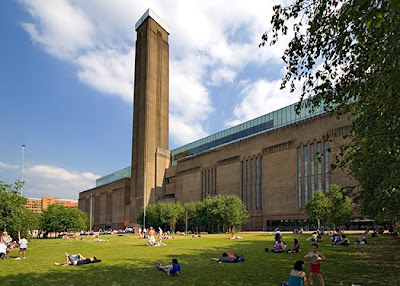The Tate Modern has put together an extensive and significant exhibition of modern and Avant-Garde art with the aim of exploring the actual process of creating art. There is a fair amount of shocking, violent and graphic artwork in the exhibition so I would say that it is not for the fainthearted. In a nutshell we are made to understand that the making of a work of art is as important as the final product. International artists such as Hockney, Niki de Saint Phalle, Helena Almeida and Edward Krasinsky, who were all working in the 1950’s to 1980’s, all feature in this daring and explosive expose, to name a few. As you enter the exhibition there are two pivotal works by Pollock and Hockney. Standing proud is a beautiful Hockney piece, from which the exhibition takes its name. ‘A Bigger Splash’ is a large, luminous painting of a swimming pool in Los Angeles where as an onlooker you can almost feel the heat of the scene. Hockney’s actual splash is created by the layering of white acrylic over many thin washes. He said of this painting: “When you photograph a splash you’re freeing a moment and it becomes something else. I realise that a splash can never be seen in this way in real life, it happens too quickly. And I was amused by this so I painted it in a very slow way” The different blues he uses and the palm trees that frame the painting don’t deter from the central subject – that of the splash. Alongside this is a film of Pollock at work in this studio produced by Hans Namuth and Paul Fallenberg, whose photos of Pollock held such a pivotal role in establishing his reputation. Placed in front of the film cleverly is the finished art work itself. One critic describes Pollock’s work in this way : “We see how Pollock in his dance of dripping, slashing, squeezing, daubing and whatever else went into a work placed an almost absolute value upon a diaristic grandeur.” The artist and what he does whilst creating his work of art becomes an integral part of the painting.
I was very much drawn to Niki de Saint Phalle’s work as she is one of my favourite modern artists. In the exhibition we see a thirty second film of her in a white bodysuit and her partner Jean Tinguely, entitled ‘The Least Effort’. Both artists are shooting red paint, presumably to represent blood, at one of her installation works. As such, the creative process of making the work of art is what is firing both artist’s imagination. The violence and destructiveness of abstract art is scrutinised and next to the film is a plaster, paint, polythene work of the finished product, called ‘Shooting Picture’. To further explore their creativity Tinguely and Saint Phalle would often invite critics and artists to shoot at their constructions in their studios, releasing the paint that was layered beneath it.
Another artist who liked to play with notions of paint and creation was Yves Klein. Famous for his blue art works Klein made a film in 1960 called ‘The Anthropometry of Blue Era’ whereby female nudes were covered in blue paint and employed as ‘living brushes’ to make an imprint on canvases. In this rather dramatic and graphic film one notices how weirdly devoid of sexuality and femininity the models become. The art work seems to become more and more violent and thought provoking as you go through the exhibition. ‘3rd Action’ by Rudolf Schwarzkogler, for example, shows evocative black and white photos of clinical scenes such as gutting fish and bound body parts. Like with Saint Phalle there is a strong suggestion of violence, instability and painful psychology. Likewise the gory pictures of nudes on top of each other by Herman Nizsch, called ‘The Festival of Psycho’ is another rather violent portrayal of the creative process. One wonders here though how this can connect to the Pollock and Hockney works at the beginning of the exhibition. It seems rather tenuous.
Themes of identity, feminism and beauty and gender are explored by artists like Helena Almeida and the installation artist Karen Kilimnik. In the room featuring the abstract artist Edward Krasinki we see how twelve mirrors are suspended from the ceiling with a single blue tape across each one of them. There is the feeling that space is receding and advancing and is not fixed and the viewer is drawn into reflected images of himself. In Jutta Kroether’s work we see a large, evocative painting suspended and notebooks where people who were invited to view the painting wrote down their thoughts and emotions. In this sense the notebooks became as important as the painting itself and we see the real, whole process of painting unravelling in front of us.
To be honest I did not know what to make of this exhibition finding some of the more graphic and violent art works unappealing and shocking. The message of the artists as a group is not always clear and in fact I left the room feeling overloaded with information. Perhaps this is the type of exhibition that merits a second or even third viewing before the concept of its subject can really be understood as a whole.
By Larissa Woolf, Arts Editor, VisitMuseums.com



No comments:
Post a Comment